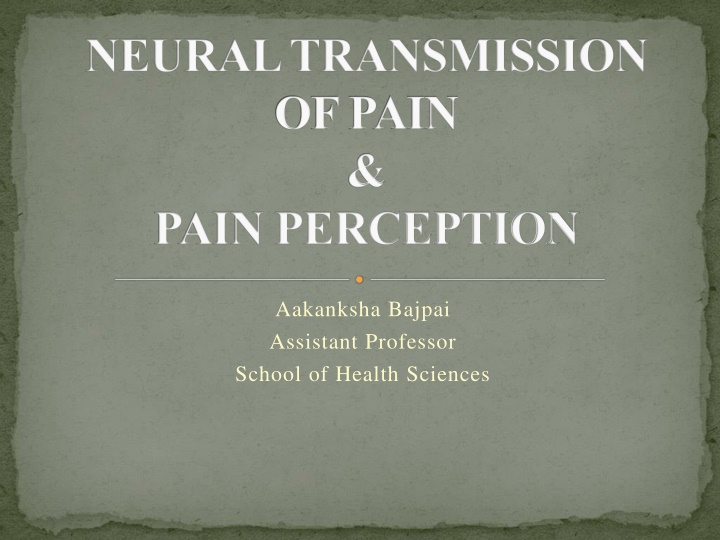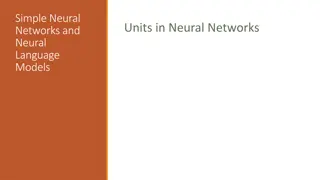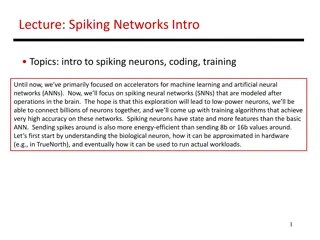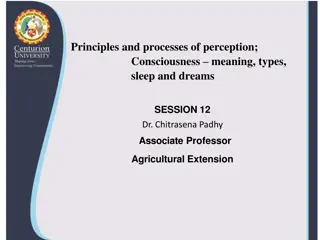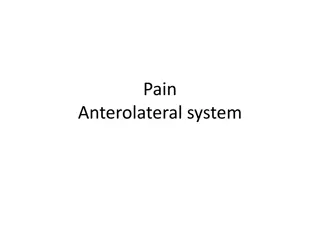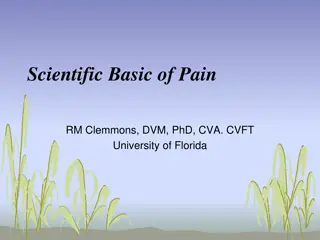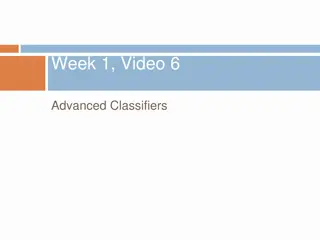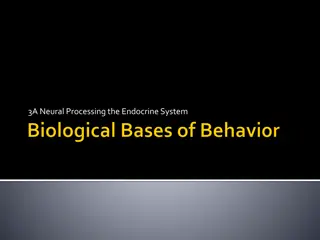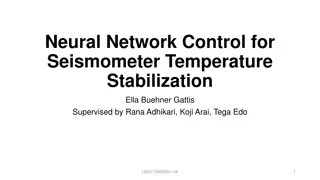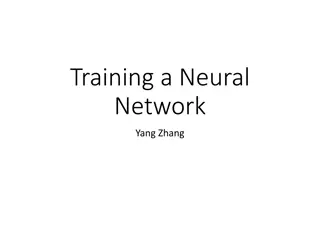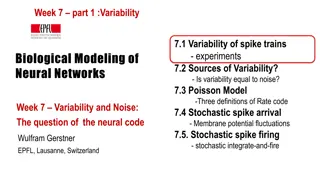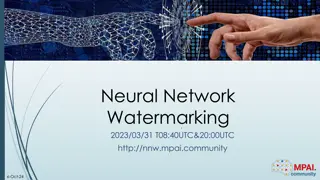NEURAL TRANSMISSION OF PAIN & PAIN PERCEPTION
A detailed explanation of neural transmission of pain and pain perception process, including the involvement of afferent nerve fibers, first-order neurons, second-order afferent fibers, pain perception process in transduction phase, and peripheral transmission phase. The process of converting energy affecting nociceptors into electrical energy and the transmission of nerve impulses from nociceptors to the spinal cord are also discussed.
Download Presentation

Please find below an Image/Link to download the presentation.
The content on the website is provided AS IS for your information and personal use only. It may not be sold, licensed, or shared on other websites without obtaining consent from the author.If you encounter any issues during the download, it is possible that the publisher has removed the file from their server.
You are allowed to download the files provided on this website for personal or commercial use, subject to the condition that they are used lawfully. All files are the property of their respective owners.
The content on the website is provided AS IS for your information and personal use only. It may not be sold, licensed, or shared on other websites without obtaining consent from the author.
E N D
Presentation Transcript
NEURAL TRANSMISSION OF PAIN & PAIN PERCEPTION Aakanksha Bajpai Assistant Professor School of Health Sciences
NEURAL TRANSMISSION Afferent nerve fibres transmit impulses from the sensory receptors toward the brain, whereas efferent fibres, such as motor neurons, transmit impulses from the brain toward the periphery. First-order or primary afferents transmit the impulses from the sensory receptors to the dorsal horn of the spinal cord. There are four different types of first-order neurons. A-alpha and A-beta fibres are characterized as being large-diameter afferents andA-delta and C-fibers as small diameter afferents.
Second-order afferent fibers carry sensory messages from the dorsal horn to the brain. Second-order afferent fibres are categorized as wide dynamic range or nociceptive specific. The wide dynamic range second-order afferents receive input from A-beta, A-delta, and C fibers. These Second- order afferents serve relatively large, overlapping receptor fields. The nociceptive- specific second-order afferents respond exclusively to noxious stimulation. They receive input only from A-delta and C fibers. These afferents serve smaller receptor fields that do not overlap. All of these neurons synapse with third-order neurons that carry information to various brain centers where the input is integrated, interpreted and acted on.
Pain Perception Process Transduction Phase Transduction is the phase of converting energy (i.e., of mechanical, thermal, and chemical forms) affecting nociceptors at the site and around the wound into electrical energy, which generates action potentials that lead to the production of nerve impulses. Pain initially develops in nociceptors, the specialized nerve endings that are activated by strong mechanical and thermal stimuli, and by chemical substances produced and released (inflammatoryresponse) in the tissueat thewound site.
Peripheral Transmission Phase The peripheral transmission phase includes the propagation or transmission of nerve impulses generated as a result of transduction from the nociceptors to the spinal cord. The terminal ends of the nociceptors that is, the free nerve endings connect with the spinal cord through two distinct afferent sensory nerve fibers: A-delta fibers and C fibers (Wright, 2002; Weisberg et al., 2006). The noxious message, now coded in nerve impulses, is transmitted to the dorsal horn of the spinal cord along these two afferent sensory fibers, whose cell body (neuron) resides in the dorsal root ganglia. Impulse transmission in the A-delta fibers occurs more rapidly than in the C fibers (approximately 15 m/s vs. 1 m/s) because the axons of the former are lightly myelinated (larger in diameter), whereas those of the latter are un-myelinated (smaller in diameter). A-delta fibers conduct mechanical as well as thermal noxious stimuli. C fibers, on the other hand, conduct mechanical, thermal, and chemical noxious stimuli.
Modulation Phase Modulation is the third phase leading to the experience of pain. This phase is characterized by a diminution, suppression, or amplification of pain (hence the word modulation). Research has shown that pain modulation occurs because of the action of nociceptive nerve impulses on the spinal gating system located in the dorsal horn of the spinal cord (McMahon et al., 2006). Because pain modulation reflects the action of our own thoughts and emotions, it is logical that the two remaining phases, central transmission (fourth phase) and perception (fifth phase), are addressed before the modulation phase.
Central Transmission Phase Central transmission is the phase that encompasses the ascending transmission, or projection, of nociceptive nerve impulses, generated by the spinal pain- transmitting neurons, also referred to as T neurons, along the spinal cord and through the anterolateral system (ALS) and the lower brain and cortex areas (Dostrovsky et al., 2006).
Perception Phase Perception the fifth and final phase relates first to the detection of pain and subsequently to the determination of its meaning and relevance. It is during this crucial phase that nociception (the organic aspect) finally becomes pain (the cognitive aspect). It is also during this phase that pain is processed
